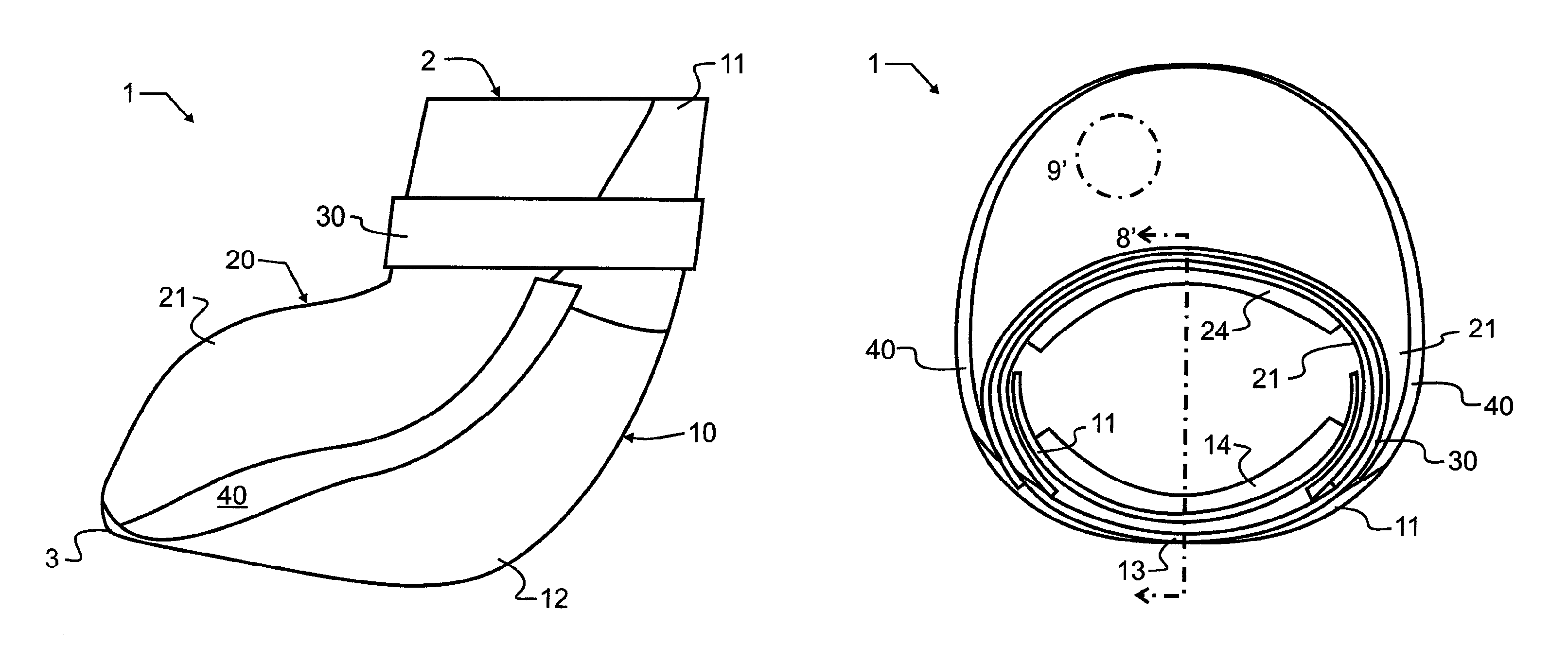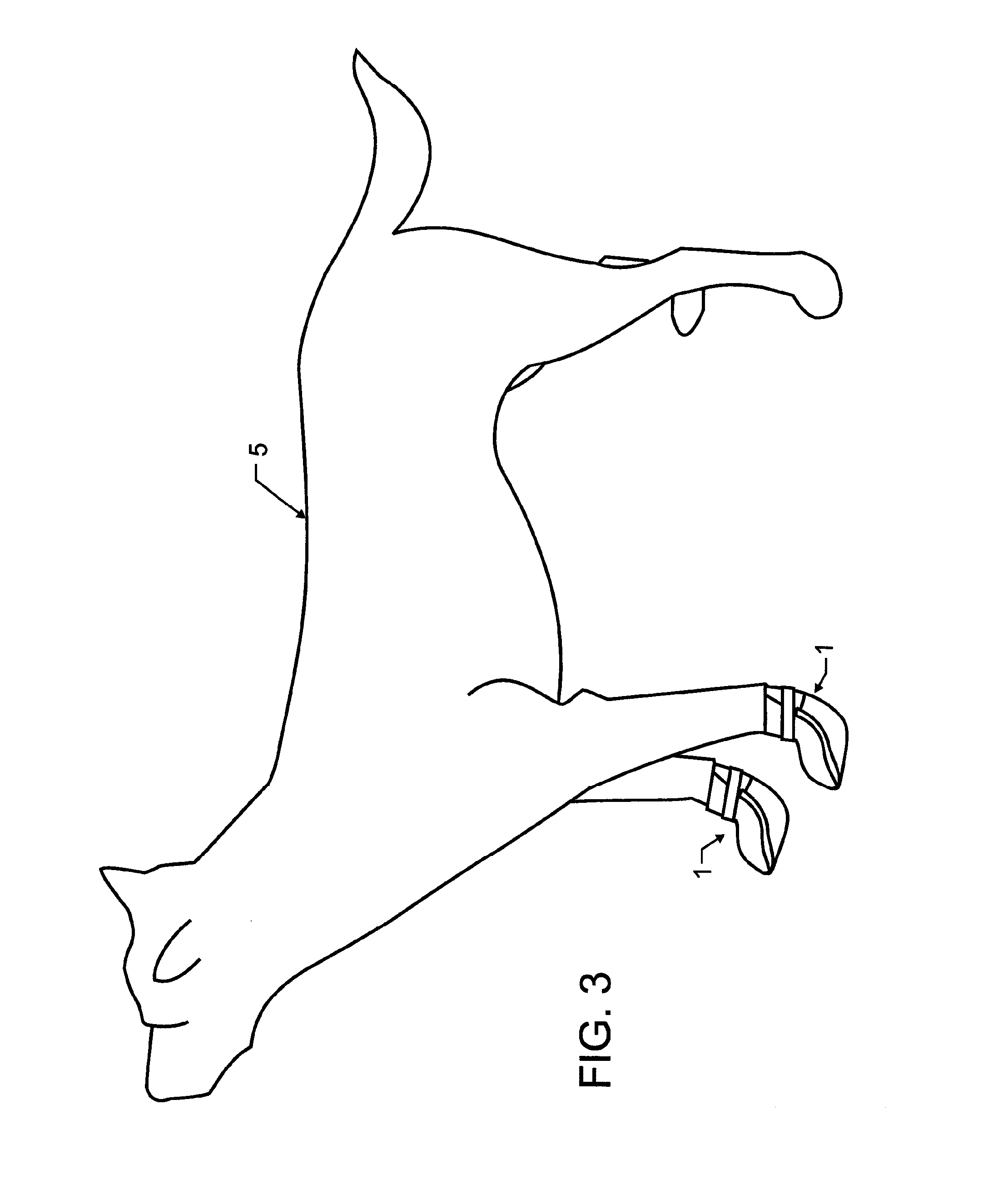Canine wound boot
a canine boot and wound technology, applied in the field of animal husbandry, can solve the problems of insufficient dog pads for traversing the ground, prior art boots tend to suffer from several common limitations, and not have the usual toughness, so as to facilitate expansion, eliminate the risk of bunching, and be easily placed around the paw of the dog
- Summary
- Abstract
- Description
- Claims
- Application Information
AI Technical Summary
Benefits of technology
Problems solved by technology
Method used
Image
Examples
Embodiment Construction
[0023]Manifested in the preferred embodiment boot 1, the present invention fulfills the objectives set forth herein above and others. As shown in FIG. 1, boot 1 has the appearance of a flexible or somewhat flaccid tube, with a closed end 3 and an open end 2 distal therefrom. Boot 1 includes a bottom 10 having a non-slip ground-engaging surface 12. In the preferred embodiment boot 1, the rear or bottom of the boot is covered from closed end 3 nearly to strap 30 with this material, though it will be understood that surface 12 may be of any size, and so may comprise a small pad on bottom 10, or may be omitted completely. This non-slip ground-engaging surface 12 will most preferably be a material sold under the brand name “Toughtek,” available from Harrison Technologies, Inc. of Gloversville, N.Y., USA, which is a durable material having good traction and pliability even at very low temperatures, and which is non-slip. Ground-engaging surface 12 could be Cordura, other nylon or any mate...
PUM
 Login to View More
Login to View More Abstract
Description
Claims
Application Information
 Login to View More
Login to View More - R&D
- Intellectual Property
- Life Sciences
- Materials
- Tech Scout
- Unparalleled Data Quality
- Higher Quality Content
- 60% Fewer Hallucinations
Browse by: Latest US Patents, China's latest patents, Technical Efficacy Thesaurus, Application Domain, Technology Topic, Popular Technical Reports.
© 2025 PatSnap. All rights reserved.Legal|Privacy policy|Modern Slavery Act Transparency Statement|Sitemap|About US| Contact US: help@patsnap.com



